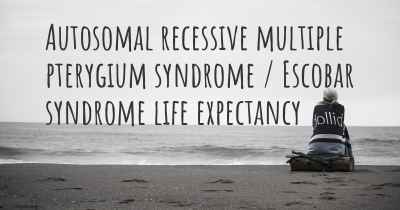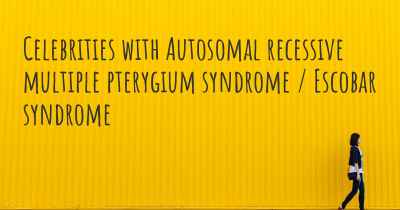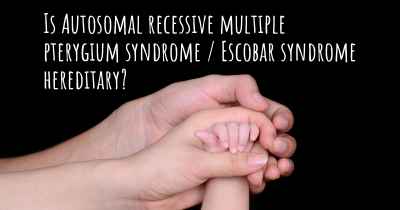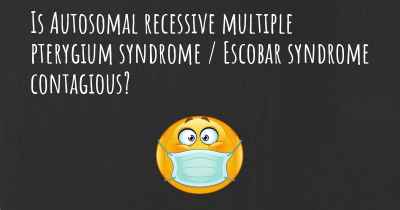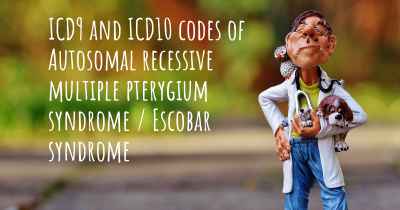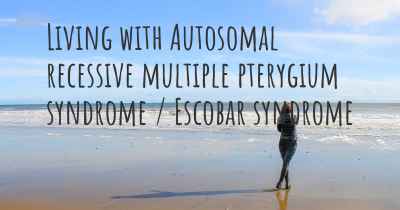How is Autosomal recessive multiple pterygium syndrome / Escobar syndrome diagnosed?
See how Autosomal recessive multiple pterygium syndrome / Escobar syndrome is diagnosed. Which specialists are essential to meet, what tests are needed and other useful information for the diagnosis of Autosomal recessive multiple pterygium syndrome / Escobar syndrome
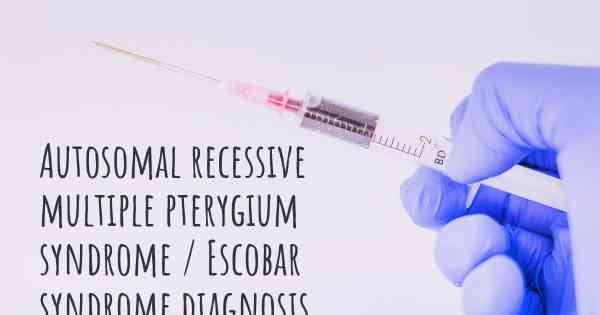
Autosomal recessive multiple pterygium syndrome, also known as Escobar syndrome, is a rare genetic disorder characterized by multiple joint contractures (pterygia), webbing of the skin, and other physical abnormalities. Diagnosing this syndrome involves a combination of clinical evaluation, genetic testing, and imaging studies.
Clinical evaluation: The first step in diagnosing Autosomal recessive multiple pterygium syndrome is a thorough clinical evaluation by a healthcare professional. They will assess the patient's medical history, perform a physical examination, and look for characteristic signs and symptoms of the syndrome. These may include:
- Pterygia: Joint contractures that restrict movement and cause webbing of the skin.
- Facial abnormalities: Such as a small mouth, cleft palate, or micrognathia (underdeveloped jaw).
- Clubfoot: Abnormal positioning of the feet.
- Scoliosis: Abnormal curvature of the spine.
- Respiratory problems: Due to chest wall abnormalities.
Genetic testing: Once the clinical evaluation raises suspicion of Autosomal recessive multiple pterygium syndrome, genetic testing is typically performed to confirm the diagnosis. This involves analyzing the patient's DNA for mutations in specific genes associated with the syndrome. The most commonly affected genes are CHRNG, CHRND, and CHRNA1. Genetic testing can be done through a blood sample or other tissue samples.
Imaging studies: In some cases, imaging studies may be used to further evaluate the extent of physical abnormalities and aid in the diagnosis of Autosomal recessive multiple pterygium syndrome. X-rays, ultrasound, or magnetic resonance imaging (MRI) can be used to assess joint contractures, bone abnormalities, and other structural anomalies.
Family history: It is important to gather information about the patient's family history, as Autosomal recessive multiple pterygium syndrome is inherited in an autosomal recessive manner. This means that both parents must carry a copy of the mutated gene for their child to be affected. If there is a family history of the syndrome or similar symptoms, it can provide additional clues for diagnosis.
Other considerations: It is worth noting that Autosomal recessive multiple pterygium syndrome shares some similarities with other genetic disorders, such as Freeman-Sheldon syndrome and lethal multiple pterygium syndrome. Differential diagnosis may be necessary to distinguish between these conditions and confirm the specific syndrome.
In conclusion, diagnosing Autosomal recessive multiple pterygium syndrome / Escobar syndrome involves a comprehensive approach that includes clinical evaluation, genetic testing, imaging studies, and consideration of the patient's family history. It is essential to consult with healthcare professionals experienced in genetic disorders to ensure accurate diagnosis and appropriate management of the condition.
